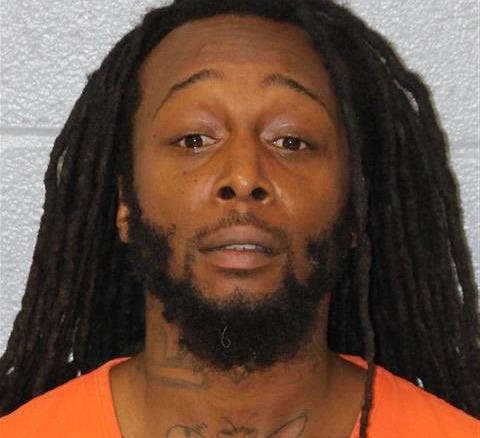It's Time to Protect Society from the Criminally Mentally Ill-Iryna Zarutska Brutal Stabbing by Decarlos Brown Jr-
OPINION: It’s time to bring back insane asylums.
On August 22, 2025, Iryna Zarutska, a 23-year-old Ukrainian refugee who fled her war-torn homeland seeking safety in the United States, was brutally stabbed to death on a Charlotte, North Carolina, light rail train. Her attacker, Decarlos Brown Jr., a 34-year-old homeless man with a long criminal history and documented mental health issues, allegedly stabbed her in the throat in a random, unprovoked attack.
Surveillance footage captured the horrifying moment, showing Brown calmly pulling a knife, standing over Zarutska as she sat engrossed in her phone, and ending her life in seconds. Zarutska, who had escaped the violence of war for a "new beginning" in Charlotte, became a tragic symbol of a system that failed her—and society at large.
This devastating incident underscores a growing crisis: the failure of our criminal justice and mental health systems to address the dangers posed by the criminally mentally ill. For too long, we’ve allowed misguided compassion and progressive reforms to dismantle the safeguards that once protected society from individuals like Brown, whose schizophrenia and history of violent behavior were known yet inadequately addressed.
It’s time to let the pendulum swing back to an era when we prioritized public safety by separating the dangerously mentally ill from society through institutionalization in modern, humane asylums.
Decarlos Brown Jr. was no stranger to the criminal justice system. Court records reveal a rap sheet dating back to 2007, including convictions for robbery with a dangerous weapon, felony larceny, and assault on his sister. In January 2025, he was charged with misusing the 911 system, claiming a “man-made material” had been implanted in his body to control his actions—a clear sign of severe mental illness. Despite a court-ordered mental health evaluation, Brown was released without bail, free to roam the streets until he crossed paths with Zarutska. His mother confirmed he suffers from schizophrenia, yet the system failed to intervene effectively, allowing a ticking time bomb to detonate on a Charlotte train.
This tragedy is not an isolated incident. Across the country, we see the consequences of deinstitutionalization, a movement that began in the 1960s with noble intentions to liberate the mentally ill from often-abusive asylums. But the promise of community-based care never materialized at the scale needed. Instead, we’ve left countless individuals with severe mental illnesses to fend for themselves, often ending up homeless, in jails, or, worse, committing acts of violence against innocent people like Zarutska. The closure of asylums without adequate alternatives has turned our streets and public spaces into de facto mental health wards, where the untreated and unstable pose a constant threat.
The argument for reinstating asylums is not about cruelty or stigmatizing mental illness—it’s about acknowledging a hard truth: a small subset of individuals with severe mental disorders, like Brown, are incapable of safely coexisting in society without significant intervention. Schizophrenia, when untreated, can lead to paranoia, delusions, and violent impulses, as evidenced by Brown’s erratic behavior and prior statements about “man-made” implants. Allowing such individuals to cycle through arrests, brief hospitalizations, and release is not compassion—it’s negligence.
Modern asylums, unlike the grim institutions of the past, could be designed with humanity and accountability in mind. They would provide long-term treatment, medication management, and therapy in secure environments, ensuring both the safety of the public and the dignity of the patient. For those like Brown, whose mental illness fuels repeated criminal behavior, indefinite separation from society may be the only way to prevent further harm.
Critics will argue that institutionalization infringes on personal freedom or risks repeating past abuses. These concerns are valid but not insurmountable. Strict oversight, regular mental health evaluations, and clear criteria for commitment—such as a history of violent crime coupled with severe mental illness—can prevent misuse.
The alternative, as we’ve seen, is a revolving door of arrests and releases that leaves victims like Zarutska in its wake. Her family’s GoFundMe page, which has raised over $35,000 to cover funeral expenses, speaks to the heartbreak of a young woman who fled one danger only to meet another in a place she believed was safe.
Some will claim community-based mental health care is sufficient, but the reality is stark: funding for such programs is chronically inadequate, and many individuals with severe mental illnesses refuse treatment without coercion.
The Charlotte tragedy has sparked outrage and renewed calls for action. North Carolina House Majority Leader Brenden Jones criticized “decades of Democrat DAs and Sheriffs putting their woke agendas above public safety,” arguing that violent criminals like Brown are allowed to “commit crimes with impunity.” While the issue transcends partisan politics, the sentiment resonates: our current approach is failing.
Iryna Zarutska deserved better. She fled Ukraine’s war for a chance at peace, only to be cut down by a system that prioritizes the freedom of the dangerously ill over the safety of the innocent. We cannot undo her loss, but we can honor her memory by rethinking our approach to the criminally mentally ill. It’s time to bring back asylums—not as relics of a cruel past, but as modern, compassionate facilities that protect both the afflicted and the public. The pendulum must swing back before more lives are lost.






If the races were reversed, this would dominate the news cycle for months.
But they’re not.
So the story gets buried.
👉 https://mrchr.is/democrats-love-ukraine-except-when
#IrynaZarutska #Charlotte #NorthCarolina #MediaBias #CrimeCrisis #DemocratFailure
The best and quickest way to start fixing this problem is to stop voting for Democrats.